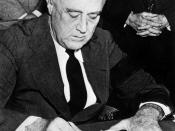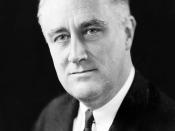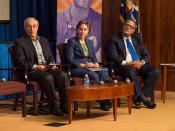In the 1930's the United States was in the throws of a great depression. Unemployment had sky rocketed, and many people were left homeless as a result of this depression. Lines miles long wove down streets as people waited to get free meals because they could not find meaningful employment. Those who did find employment were forced to work for miniscule amounts, and many children were forced to find employment to help out their struggling families. A large majority of those children who did find employment, were forced to work many hours for barely a livable wage.
In 1937, President Franklin Roosevelt declared that "All but the hopeless reactionary will agree that to conserve our primary resources of manpower, government must have some control over maximum hours, minimum wages, the evil of child labor, and the exploitation of unorganized labor." In 1938 the Fair Labor Standards Act (FLSA) was passed with immense pressure from organized labor as a primary means to conserve that "primary resource of manpower", but instead drove out hundreds of thousands of workers in order to force higher wages for other people.
Though the unemployment rate around that time was 18%, the Federal Government decided it wanted to flex its political muscle and drive wages higher. In those times, the FLSA established a twenty-five cents minimum wage, and mandated a 40-hour workweek. Any time spent over 40 hours per week paid out as time and a half.
The original intent of the FLSA was to decrease the advantage that lower paying southern factories had over northern factories. Puerto Rico was devastated as a result of the new law as Economist Benjamin Anderson noted, "unemployment resulted there through the sheer inability of important industries to pay the twenty-five cents an hour."
Some studies suggest that raising the minimum...


